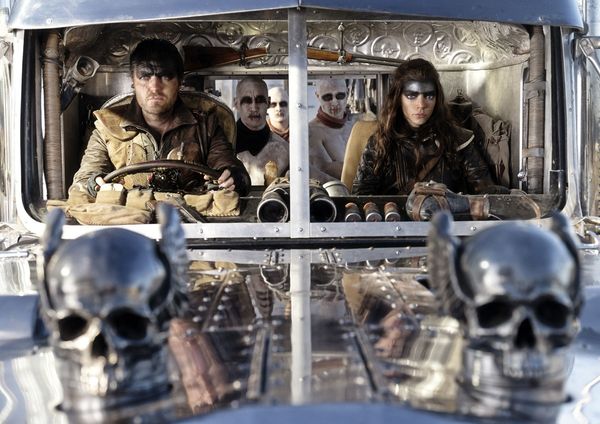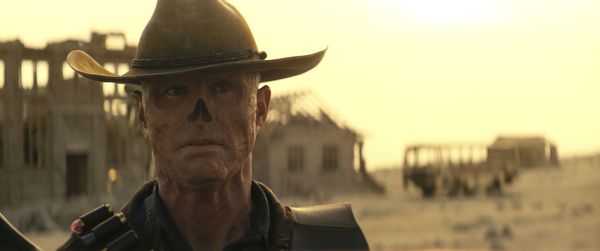
Maybe I missed something, but the underperformance of “Furiosa: A Mad Max Saga” over its opening weekend did not cause the usual explosion of sexist edgelords sharing “go woke, go broke” posts.
There are always a few floaters determined to escape the flush, but fewer people are taking them seriously, which is something of a relief. The overall consensus is that George Miller’s “Mad Max: Fury Road” prequel is outstanding, and its $32 million four-day total for Anya Taylor-Joy’s debut as its namesake hero was still enough to score the top box office ranking. Its second weekend out is another story.
Since it also set a record as the lowest No.1 Memorial Day release since 1995, it's amazing that a plague of poisonous Pepe the Frogs isn’t gumming up our social media streams.
But we’d be foolish not to factor in the franchise’s testosterone and petrol appeal. Miller’s apocalyptic wastelands are dominated by musclebound hulks with names like Scabrous Scrotus and Rictus Erectus. Their adversaries battle them for control over a gas refinery and bullet factory ruled by their father – a pale, masked blob who lives on a rock and maintains a harem of human broodmares.
For climate-denying Second Amendment enthusiasts, Miller might as well have created a window to Heaven. For the rest of us, it’s an adrenaline-cranked fable amped up by the mechanical ballet of its action sequences.
In case you’ve somehow avoided this world, the first three “Mad Max” films starred Mel Gibson as a cop caught in an apocalyptic event brought on by fuel shortages, environmental destruction and global nuclear destruction. The survivors motor across what is now an endless wasteland killing for sport and a full tank of gas.
"Fury Road" introduced Furiosa; its prequel shows her as a child living in an oasis, the Green Place, from which she’s kidnapped by a band of vandals led by a striving idiot biker named Dementus (Chris Hemsworth). She survives him and great cruelty to emerge in adulthood as a bloodthirsty Valkyrie.
Hemsworth also delivers a performance indicative of a man who knows the story was never about him, in the same way “Fury Road” wasn’t really about Mad Max. Like Tom Hardy before him, the “Thor” actor is there to lure us into the badlands. The catch is that there have always been fewer “Mad Max” fans than “Thor” fans.
Whatever is your pleasure, “Furiosa” may be the female-led box office flop that bridges the partisan divide, enabling typically embattled tribes to agree that it deserves better. That also frees us to understand why it was always going to have difficulties drawing an audience.

For one, industry experts across the board have predicted that 2024 will be one of the roughest yet for new theatrical releases. Last year's combined WGA and SAG-AFTRA strikes forced production delays we’re feeling right now in the form of fewer movie releases, meaning that the ticket sales shortfalls aren’t going to let up anytime soon. "Furiosa's" main competition over our recent three-day weekend was "The Garfield Movie." (Now ask yourself when the last time was that you thought about Garfield the cat on a regular basis.)
This was also the first Memorial Day weekend without a Marvel or another Disney release to raise all ships. (“Deadpool 3” won’t be out until July 26, although we’ve been love-bombed with so much hype you’d think the Ryan Reynolds/Hugh Jackman team-up was imminent.)
These results show us how much such tentpoles matter. “The Little Mermaid,” for example, made its 2023 Memorial Day debut to the tune of $118, nearly four times the domestic take for “Furiosa.” These movies have nothing in common besides featuring female leads. But they’re useful to compare because “The Little Mermaid” has a quality Miller’s film lacks by being a family film. Parents could take their kids. Nostalgic fans of the animated original might have made a date night of it. Successful weekend openings rely on drawing male audiences and female audiences that are over and under 25 out of their home and into theater seats.
“Furiosa” was never going to meet those metrics.
According to PostTrak data shared in The Hollywood Reporter, the opening weekend gender split for “Furiosa” was 71% male to 29% female. Worse, only 21% of the audience was part of the key 18-24 age group that comprises the most frequent moviegoers.
There’s always that increasingly common reason for sluggish movie ticket sales, which is that more of us are holding out to stream new releases unless it is somehow deemed an event.

Less examined is the extent to which the longer-ranging influence Miller’s stories have had in popular culture might be contributing to people waiting for its video-on-demand window. The first “Mad Max” turned 45 this year, with a 30-year gap between its last sequel, “Mad Max: Beyond Thunderdome,” and “Fury Road,” which introduced Furiosa (as played by Charlize Theron). This movie arrives nine years after that, which is enough of a wait to lose fans’ momentum.
Within those gaps, however, arose dystopian video game fantasies influenced by Miller’s vision that also have more of a built-in female audience. Prime Video’s adaptation “Fallout,” for example, has remained among the Top 10 most streamed titles across all platforms for weeks since its early April debut.
It features Ella Purnell as a bright-eyed and capable woman raised in a Vault after a nuclear apocalypse decimates the world sometime in an alternate reality stuck in the 1950s. When she’s forced to leave her (mostly) safe, sealed-away home on a quest that draws her to the irradiated surface, she encounters a world twisted by radiation and mad science.
Eventually, she’s hunted by an undead black hat called The Ghoul (an especially superb Walton Goggins). Like some spaghetti western version of Max Rockatansky, he's driven by a vendetta that sends him tearing across the ravaged world.
One might suspect that “Furiosa's" struggles are related to some overall exhaustion with tales like this, but “Fallout,” like “The Last of Us” before it, proves otherwise.
According to Nielsen's latest available measurements of U.S. audiences, it’s the third most popular title between “Grey’s Anatomy” on Hulu and “Bluey” on Disney+. That may have something to do with the more even gender split among gamers; women make up about 48% of video game players in the United States, according to Statista.
The estimated split between men and women who play “Fallout” is 66% to 34% women, says a YouGov report. The series is reportedly creating a feedback loop, bringing new gamers to its multiplayer title and longtime players to Prime’s version.

It also strikes a balance between grubby apocalyptic doom and lightness even if it is ultimately a cynical story. Goggins and Purnell’s performances make us want to stay with them for eight hours which is easy enough to do when you don’t have to leave your couch.
Still, there’s validity in the argument that directors like Miller compose multisensory experiences for theaters, earning the price of admission and the effort it takes to leave home. “Furiosa” is an intentionally bombastic excursion made for the broadest screen available. But a show like “Fallout” is enough to keep audiences sated until we can watch Miller's movie in our living rooms. That may cost us further stories from his franchise — unless, perhaps, he agrees to make the next one smaller in scope and execution. For some, that would spell the end of the world.
"Furiosa: A Mad Max Saga" is in theaters now. All episodes of "Fallout" are streaming on Prime Video.







